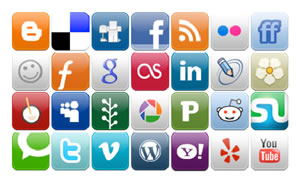
I was excited and nervous about the complex issues in this class. I was introduced to new ideas: SNS, affordances, aggregators, and endless social networking tools that I have never heard before, such as NetVibes, Wimba, Wallwisher, Glog, Dehood, Google SearchSttories, Yahoo Pipe, Second Life, I also had a perspective of their applications to libraries, and it was so interesting to consider the affordances and constraints of so many social media tools, how and why some of these succeed and others don’t. Although I have a superficial and rushed understanding of them, and was absent from some discussions, I have learned about social media and new learning styles in the digital age.
In addition, I liked working collaboratively so that each person can bring his/her talents to a group assignment. I truly appreciated someone else taking the lead. It seems that our instructor is a leader who refines our progress, but many classmates are my instructors in discussions. The pressure to share with the class makes me more anxious than usual, and I was able to digest everything as much as I could. At the same time, I need to get acclimatized to various topics and thoughts. Especially, I must constantly adjust my opinions to the group preference while being inspired to explore other avenues of topics in ways I had never considered. Our final group project is a good example, titled A Web 2.0 Service for Teen Fans of Graphic Novels-Using Social Media to Create Community and Encourage Reading among Teen Fans of Graphic Novels.
What is more, there remains some insight for career development. For instance, we talked about Web 2.0 to 2015, Web 3.0, 3D, and Second Life (SL). Although SL is still not widely adopted by libraries, it interests me to keep learning about new social tools. Having this experience and enthusiasm for newly emerging tools will prepare me for future professional opportunities. After learning about social tools in “create something” thread, I really wanted to try out tools for fun or practical demands in the near future.
During this class, I used GoogleDocs and Vista chatroom for our final project. Although I had some difficulties with Wimba, I was less nervous after our formal group presentation and successfully chatted with Sarah LaMoy. I feel more comfortable with the virtual environment and the online learning style. Certainly, it is necessary for my future professional work. As Sarah LaMoy says, “some of the best learning, I believe, develops a deep sense of responsibility among teams and a respectful peer-to-peer reciprocity.” I have the same feeling and enjoyed Michael Wesch’s lecture on YouYube, and the experience of sharing and learning with peers. It looks like “a showcase for diverse talents and critical thinking”. This has special meaning for me as a non-native English speaker, because to some extent I make sense of how other native students think, talk, and develop their ideas, and how the instructor implements his complex hybrid pedagogy: starting participation in examining the glossaries of social media, gradually moving to collaboration and eventually to creation and perspective for the future (Dean’s posting).
In a word, this class introduced me to dabble in a new learning style because social media tools help grow my connections with many people and enormous exciting new ideas. It also opens up a new avenue to learn and communicate with outside, and I am starting my exploration and new personal journey now.